Brevis...
Price: $10,750 per pair
Likes: Amazing single driver sound
by John Gatski
In theory, single driver speakers should be the best speakers in the world. Delivering such a clean, full-range sound — without the phase anomalies inherent in crossovers that separate the frequencies among multiple drivers — could be sonic utopia.
In practice, however, the results are often mixed. With single-driver speakers that offer good midrange but lack bass or dull down the realistic sheen of a dedicated tweeter.
But there really are good single-driver speakers, however, fans often have to seek them out, as they are not as popular as multi-driver speakers that pervade the hi-fi scene. An example of an audiophile-caliber, single-driver speaker is the Volti Audio Veretta.
But there really are good single-driver speakers, however, fans often have to seek them out, as they are not as popular as multi-driver speakers that pervade the hi-fi scene. An example of an audiophile-caliber, single-driver speaker is the Volti Audio Veretta.
I discovered the Veretta at the Capital Audio Fest this past July, and it is, indeed, a terrific single-driver/cabinet system that delivers a convincing audio presentation with good bass, accurate midrange and treble with enough presence that you will be looking for that second driver.
Features
The handmade, built-to-order Volti Audio Veretta is the creation of Greg Roberts, who makes some of the best modern horn speakers available today. The $10,750-per-pair Veretta is a 5-inch-driver based, mini-tower speaker that utilizes the made-in-Japan Feastrex NF5, an audiophile-quality, full range driver that is spec’d at 35 Hz to 25 kHz, plus or minus 3 dB. The driver is efficient as well, at 94 dB (1W/1M).
Roberts said he got the idea to build the single-driver speakers when he got a hold of a sample of the Feastrex driver and noted its clean, full-range character — without the typical weak points of other single drivers.
Based on the Japanese-manufactured Feastrex Natural-flux driver, the NF5 is said to be Feastrex’s best value single driver. The “Naturflux” magnetic circuit is said to accommodate flux behavior and uses it more effectively. According to the Feastrex web site: “The Naturflux design demonstrates the importance of voice coil gap flux stability and strength in high-fidelity sound reproduction.”
The sonic result was a rich, fairly accurate tone, without the tweeter artifacts you sometimes get with separate high frequency-drivers (edginess, over sibilance, high-frequency resonances).
Because single-driver designs don’t have the luxury of extra drivers to help augment bass, the cabinet design is critical, and Greg Roberts settled on a small tower to deliver all the glorious sound from the diminutive Feastrex driver, which costs Volti more than $4,000 for each matched pair of drivers. (Feastrex also sells a nine-inch version of their drivers for more bass and SPL.)
The Volti-designed cabinet is essential to the Veretta's balanced, clean sound. The ported, bass-reflex cabinet helps deliver bass to below 60 Hz in a clean, unobtrusive manner. The front-driver and bass ports are each hidden behind a detachable, magnetic grill. The speakers come with two different port grills that can be interchanged to provide two different tunings to the port and to the sound of the bass.
The curved cabinet sides are custom-made with six layers of 1/8th-inch thick Baltic Birch, laminated in house at the Volti factory. All of the other parts of the cabinet are made of Baltic Birch plywood as well. Veneers are all top-quality, paper-backed, and sanded to perfection. The finish is a catalyzed lacquer, applied to the veneer, resulting in an extremely durable finish.
According to Volti, the cabinet has curved sides in a "boat-tail" design; hence, the cabinet front is not the widest point. The sides slightly narrow in at the front, which provides a better view of the wood sides of the cabinet from more angles. Besides the aesthetics, this design also allows the front of the cabinet to be as small as possible, which reduces sonic reflections.
 |
| Feastrex NF5 Full-Range Driver |
The speakers are attached to two mounting platforms (plinths). The lowest sits on spikes to decouple them from the floor and to put them at the proper speaker height. The speakers come standard with about a half-meter of stranded wire protruding from the bottom. The owner will have to solder on the desired termination to the onboard cables. I made a barrier strip terminal with banana-plug input to allow me to use my Alpha-Core solid-copper conductor speaker cables.
According to Roberts, not having speaker wire connectors was part of the design, giving the Veretta owner the choice of running their favorite wires from their amplifiers directly to the Feastrex drivers — without having connections along the way. Alternately, Volti will provide a custom-made connector block for those who don’t want to pull drivers to connect speaker wires.
The overall Veretta dimensions are: 38-inches tall with the two plinths attached and 19-inches deep — just the speaker cabinet from front to back. They are 9-inches wide at the widest point — about 1/3rd of the way back from the front. Weight is 67 pounds each, with the two plinths attached.
The Volti Verettas were set up in my my main listening room about seven feet apart slightly towed in. I connected them to a number of amps and found that the Verettas worked well with all of them. The amp list included: the Class A/B MOSFET Pass X350.5, the all-Class A Pass INT-30A, a Bryston 14BSST bipolar Class A/B, the single-ended solid-state First Watt F3 JFET output, and the Rogue Audio Medusa digital/tube hybrid amp.
For preamp duties, I used either a Legacy Coda, or Rogue Audio Model 99 Magnum tube preamp. Source gear included the Oppo BDP-95 universal player, Esoteric DV-50 universal player, as well as a Benchmark DAC1 Pre. Interconnects and speaker wire were courtesy of Alpha-Core’s solid-silver Goertz line, and the power cords and strip were from Essential Sound Products newly revamped Essence line.
For preamp duties, I used either a Legacy Coda, or Rogue Audio Model 99 Magnum tube preamp. Source gear included the Oppo BDP-95 universal player, Esoteric DV-50 universal player, as well as a Benchmark DAC1 Pre. Interconnects and speaker wire were courtesy of Alpha-Core’s solid-silver Goertz line, and the power cords and strip were from Essential Sound Products newly revamped Essence line.
Imaging was excellent. I did not think that the width and depth of a single-driver speaker could be so convincing, but the Veretta, again, impressed with its spread of detail.
All the music was 24-bit or DSD from DVD-A, SACD Blu-ray or downloads from HD Tracks or ITRAX. I had a lot of speakers on hand for general comparison, including the new Martin Logan Montis electrostatics, a pair of Westlake LC2.65s and Legacy Studio HDs, but I really did not get into direct A/B comparisons — since that would be apples to oranges. My point with this review was to ascertain how convincingly a single-driver speaker can relay well-recorded music. We know that multiple driver speakers can go lower and higher than the Veretta, but I wanted to hear how much of the audio spectrum the Feastrex-based Veretta could convey with that one driver simplicity ( two in stereo).
First up was the Groove Note Anthony Wilson Trio — Our Gang SACD, a direct-to-DSD jazz trio recording with Hammond organ, Gibson jazz guitar and drums. The slightly warm-sounding, recording is very dimensional with abundant transient detail, midbass and midrange. Most multi-driver speakers I use reproduce this recording with a revealing accuracy. Could the Veretta do it as well?
Well, yes it did. In fact, I was really impressed by how much detail you could hear (room reverb, organ noise, and that full, fat, note fretting of the Gibson jazz guitar). Sure, there was not as much cymbal zing as a titanium done tweeter, but the essence of the top end was there in spades. And with the ported cabinet providing ample musical bass, I liked what a heard. On balance, the single-driver speaker could deliver instrumental tone accuracy, yet there was something else, a certain simplicity to the sound. No multiple driver phase incoherence, no time-alignment gimmicks; just simply good sound. Reminds me of those classic ‘50s recordings that were done in real time with one microphone. Clean and focused and totally in phase.
I played a bunch of classical SACDS, including the Mercury Living Presence Janos Starker — Bach Solo Cello Suites SACD, Ole Bull — Violin Concertos from 2L Blue-ray music series, the SACD of the Eric Kunzel/Cincinnati Pops — 1812 Overture from the infamous 1978 Telarc recording (yes, the one with the real cannons), and a private recording made by Tom Jung of a Steinway piano using the incredible Joe Grado microphones.
I think I enjoyed classical music the most on this speaker. The key midrange and lower treble reproduction were very convincing. I could hear cello and violin overtones, symphony dynamics, from soft to loud, as well as a decent amount of tympani bass. The sonic result was a rich, fairly accurate tone, without the tweeter artifacts you sometimes get with separate high frequency-drivers (edginess, over sibilance, high-frequency resonances). The Veretta, though limited in total high-frequency output versus, say, a metal dome that can go out to 30 kHz, can certainly deliver the 15 kHz+ goods.
After a few days, I grew so comfortable with the speaker, that I did not feel I was missing any of the essential sonic spectrum. As a testament to the Feastrex driver, it really handles power well. Cranked up to 90 dB or so, the driver stayed controlled and clean, Sub-45 Hz bass played at really loud levels could get a little muddy, but those bottom octave bass performance is not really the speaker’s forte. Stick with bass in the 50 Hz to 60 Hz region, and you are fine with the Veretta.
The Volti Veretta proves that a good-sounding, high-end speaker can be made with just one driver. The combination of Greg Roberts’ spot-on mini-tower cabinet, and Feastrex’s amazing NF5 driver gives an audiophile a rewarding listening experience.
Imaging was excellent. I did not think that the width and depth of a single-driver speaker could be so convincing, but the Veretta, again, impressed with its spread of detail. If you go out of the sweet spot, dispersion still stays fairly intact. Moving your head above the ear plane, changes the sound a bit, but not as much as I would have thought.
Although I could play the speakers fairly loud, this speaker works best in small-to-medium rooms. Also, the ported-design benefits from close placement to the wall for bass reinforcement, so you don’t have to worry so much about the speakers being too close to boundaries. Using an AudioControl RTA, I measured bass to 45 Hz with the Verettas in the middle of the room. Nice.
I really like the size of the Veretta. The mini-tower is easy to move around to find the ideal location, and it should not overwhelm a small room. Iy also is a very attractive speaker, modern, yet it projects a simple elegance.
My complaints are few with the Volti Veretta. In fact, only one — the lack of onboard speaker connectors. Since the Veretta is custom-built to order, maybe Volti can add them for a nominal fee.
The verdict
The Volti Veretta proves that a good-sounding, high-end speaker can be made with just one driver. The combination of Greg Roberts’ spot-on mini-tower cabinet, and Feastrex’s amazing NF5 driver gives an audiophile a rewarding listening experience. They are not cheap at $10,000 a pair, but in audiophile terms, they are not so over the top — especially since the price includes three grills, the two mounting platforms and shipping. Besides, I can forgive the high price a bit because of its domestic manufacture. These speakers are built with premium components and cabinet materials in the USA — by U.S. workers; the Volti factory is located in Maine.
Of course, I have given the Veretta the Everything Audio Network Stellar Sound Award. This is an exceptional-sounding, single-driver speaker that deserves to be heard.
The EAN Interview!
Volti Audio President/Designer
Greg Roberts
EAN: After the magnificent horn design of the Vittora, what made you want to build a full-range, single-driver speaker?
GR: The Veretta is the second speaker I have designed and manufactured. In terms of design, it’s about as far removed from the first one (The Vittora) as possible. Both designs produce a very enjoyable music listening experience that emphasizes well-balanced tonal characteristics, accuracy, and dynamics. The Vittora does this in a big powerful way, with a very large overall presentation coming from multi horn-loaded drivers and a complex, passive crossover network. The Veretta does its thing in a whole different way, with the simplicity and coherence of a single driver, no crossover and a refined coordination between the driver and the cabinet.
EAN: The key to the Veretta is the Feastrex driver. Why did you choose this driver for the Veretta?
GR: The Veretta is the second speaker I have designed and manufactured. In terms of design, it’s about as far removed from the first one (The Vittora) as possible. Both designs produce a very enjoyable music listening experience that emphasizes well-balanced tonal characteristics, accuracy, and dynamics. The Vittora does this in a big powerful way, with a very large overall presentation coming from multi horn-loaded drivers and a complex, passive crossover network. The Veretta does its thing in a whole different way, with the simplicity and coherence of a single driver, no crossover and a refined coordination between the driver and the cabinet.
EAN: The key to the Veretta is the Feastrex driver. Why did you choose this driver for the Veretta?
GR: The Veretta uses the wonderful Feastrex NF5 driver, which retails for$4,200 a pair. The Veretta can also use the NF5EX Field coil driver as well. These high-quality Feastrex drivers are the perfect match to the gracefully designed and extremely well-built cabinets that come out of our shop. I looked at some of the lower-cost drivers available and just decided they weren’t really up to the level of quality that I wanted to put in my cabinets.
EAN: Have you had your official roll-out of the Veretta?
GR: Technically, the 2012 Capital Audio Fest in DC last July was the debut of the Veretta, but CAF was really just a dress rehearsal. The larger Rocky Mountain Audio Fest 2012 will be the true debut of the Veretta. At the Capital Audio Fest, the Veretta room was very well received. We teamed up with Mojo Audio for the music server and cables, and Déjà Vu Audio for the amplifiers and preamplifier, and the overall system was amazing. We’re really looking forward to recreating this system (using BorderPatrol amps and preamp this time) at RMAF to let people hear just how good the Feastrex drivers can sound. Full-range response, tonally well-balanced, coherent and focused imaging, wide soundstage, and great sounding music.


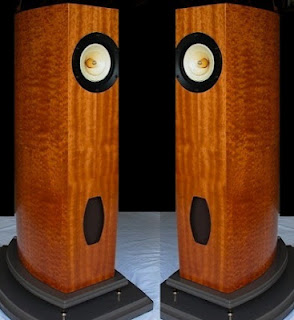




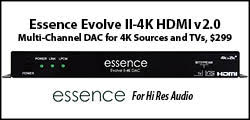

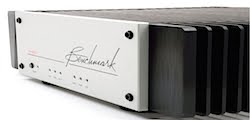



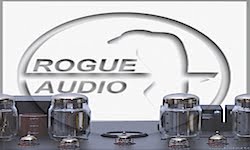

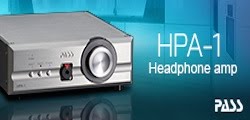


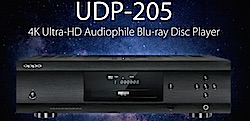
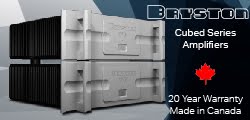

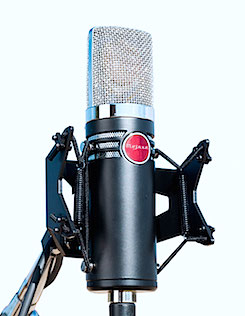
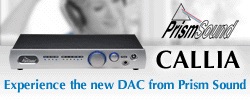
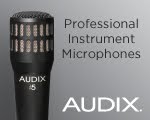


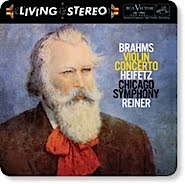






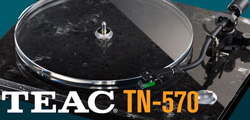





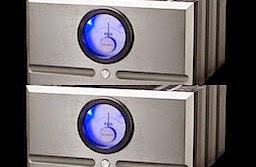



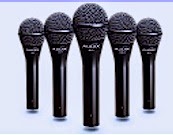


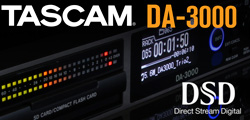

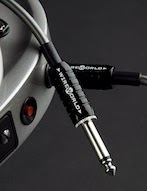

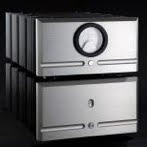









No comments:
Post a Comment